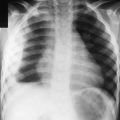Chapter 281 Babesiosis (Babesia)
Fox L, Wingerter S, Ahmed A, et al. Neonatal babesiosis: case report and review of the literature. Pediatr Infect Dis J. 2006;25:169-173.
Hatcher JC, Greenberg PD, Antique J, et al. Severe babesiosis in Long Island: review of 34 cases and their complications. Clin Infect Dis. 2001;32:1117-1125.
Herwaldt BL. Babesiosis. In Strickland GT, editor: Hunter’s tropical medicine, ed 8, Philadelphia: WB Saunders, 2000.
Krause PJ, Gewurz BE, Hill D, et al. Persistent and relapsing babesiosis in immunocompromised patients. Clin Infect Dis. 2008;46:370-376.
Krause PJ, Lepore T, Sikand VK, et al. Atovaquone and azithromycin for the treatment of babesiosis. N Engl J Med. 2000;343:1454-1458.
Krause PJ, Telford SRIII, Pollack RJ, et al. Babesiosis: an underdiagnosed disease of children. Pediatrics. 1992;89:1045-1048.
Krause PJ, Telford SRIII, Spielman A, et al. Concurrent Lyme disease and babesiosis: evidence for increased severity and duration of illness. JAMA. 1996;275:1657-1660.




